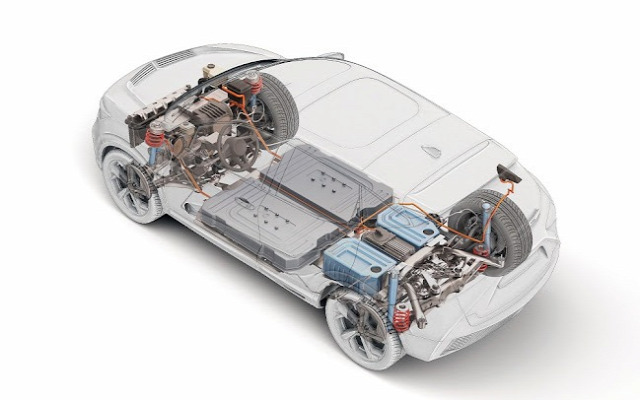
As the automotive industry undergoes a transformative shift towards electrification, the demand for electric vehicles (EVs) is rapidly increasing. Alongside this transition, there's a growing need for specialized adhesives and sealants tailored to the unique requirements of EVs. The global additives market for EV adhesives and sealants was valued at $91.4 million in 2022, and it is expected to grow at a CAGR of 21.32% and reach $627.6 million by 2032.
The Evolution of Electric Vehicles:
Electric vehicles represent a paradigm shift in automotive technology, offering numerous benefits including reduced emissions, lower operating costs, and enhanced performance. However, the design and manufacturing of EVs present distinct challenges compared to traditional internal combustion engine vehicles.
One of the key challenges lies in the assembly process, particularly the bonding and sealing of components in EVs. Adhesives and sealants play a critical role in ensuring the structural integrity, noise reduction, and water tightness of EVs, while also contributing to lightweighting and improved aerodynamics.
Specialized Adhesives and Sealants for EVs:
The unique characteristics of electric vehicles, such as high-voltage systems, thermal management requirements, and exposure to harsh environmental conditions, necessitate the development of specialized adhesives and sealants. Manufacturers are increasingly turning to additives to enhance the performance and durability of these materials.
-
Thermal Conductive Additives: Effective thermal management is essential for maintaining the optimal operating temperature of electric vehicle components, including batteries, power electronics, and electric motors. Thermal conductive additives, such as graphene, boron nitride, and metal oxides, are incorporated into adhesives and sealants to improve heat dissipation and thermal stability, thereby enhancing the reliability and longevity of EV systems.
-
Flame Retardant Additives: Safety is paramount in electric vehicles, particularly concerning fire risk mitigation. Flame retardant additives, such as phosphorus-based compounds and halogen-free additives, are utilized to impart fire resistance to adhesives and sealants, ensuring compliance with stringent automotive safety standards and regulations.
-
Conductive Additives: Electric vehicles rely on intricate electrical systems for propulsion, energy storage, and onboard electronics. Conductive additives, such as carbon nanotubes, silver nanoparticles, and conductive polymers, are incorporated into adhesives and sealants to enable electrical conductivity, EMI shielding, and grounding, thereby enhancing the performance and reliability of EV electrical connections.
-
Environmental Additives: With a growing emphasis on sustainability and environmental responsibility, manufacturers are developing eco-friendly adhesives and sealants for electric vehicles. Bio-based additives, recycled materials, and solvent-free formulations are employed to reduce carbon footprint and minimize environmental impact throughout the vehicle lifecycle.
Request A Free Detailed Sample on Additives Market for EV Adhesives and Sealants
Market Outlook and Future Trends:
The additives market for EV adhesives and sealants is poised for significant growth and innovation in the coming years. As electric vehicle adoption continues to accelerate worldwide, driven by regulatory mandates and consumer preferences, the demand for high-performance bonding and sealing solutions will rise correspondingly.
Key trends shaping the future of the additives market for EV adhesives and sealants include:
-
Continued Research and Development: Manufacturers will continue to invest in R&D to develop novel additives and formulations tailored to the evolving needs of electric vehicles, with a focus on improving performance, efficiency, and sustainability.
-
Collaboration and Partnerships: Collaboration between adhesive manufacturers, additive suppliers, automotive OEMs, and research institutions will foster innovation and accelerate the commercialization of advanced bonding and sealing solutions for electric vehicles.
-
Integration of Smart Technologies: The integration of smart technologies, such as sensors and predictive analytics, into adhesives and sealants will enable real-time monitoring of bond integrity, aging behavior, and performance degradation, enhancing reliability and safety in electric vehicles.
-
Regulatory Compliance and Standards: Compliance with regulatory requirements, such as REACH, RoHS, and UL standards, will remain paramount for manufacturers of EV adhesives and sealants, driving the adoption of environmentally friendly additives and materials.
China to be One of the Most Dominating Regions in the Global Additives Market for EV Adhesives and Sealants
China accounted for the majority part of the global additives market for EV adhesives and sealants in 2022 and is expected to maintain its leading position during the forecast period in terms of volume. The country has the largest EV fleet size and dominates EV battery production globally. Shifting consumer preference toward EVs and HEVs, rising environmental awareness, availability of raw materials, economic development, and cheap labor are some major factors driving the consumption of EV additives in China.
Get Detailed Insights on Electric Vehicle Market Research Reports
Conclusion:
The additives market plays a vital role in driving innovation and advancement in EV adhesives and sealants, enabling manufacturers to meet the complex performance and safety requirements of electric vehicles. By leveraging cutting-edge additives and embracing sustainable practices, the automotive industry can accelerate the transition towards a greener, more electrified future, while ensuring the reliability, safety, and durability of electric vehicles on the road.





